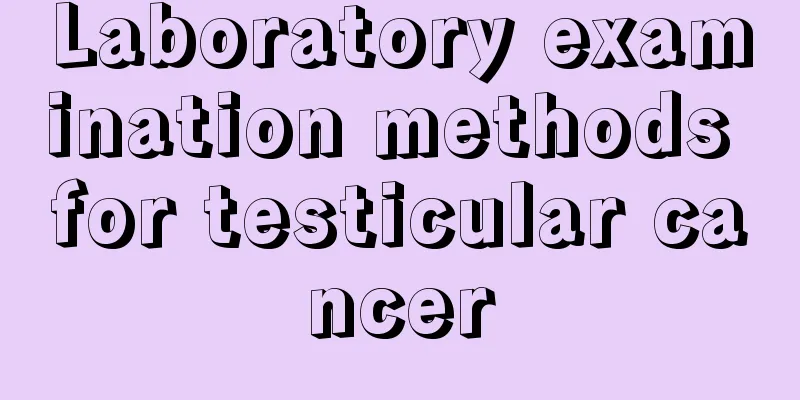Laboratory examination methods for testicular cancer

|
Testicular cancer can be well treated if it is discovered early, but some patients do not pay attention to the treatment of this disease, which leads to the development of the disease to the late stage and the loss of the best treatment period. In fact, testicular cancer patients should go to the hospital for examination and treatment in time after the symptoms appear. So what are the specific laboratory examination methods for testicular cancer? Mainly serum β-HCG, AFP and LDH detection, these serum tumor markers are of great significance for treatment, follow-up and prognosis. β-HCG is synthesized by syncytiotrophoblast cells, with a serum half-life of 24-36 hours. It is elevated in the blood of patients with choriocarcinoma, embryonal carcinoma and spermatogonia. Elevated AFP is seen in pure embryonal carcinoma, teratocarcinoma, yolk sac tumor and mixed tumors, but pure choriocarcinoma and pure spermatogonia do not synthesize AFP. The serum half-life of AFP is 5-7 days. Elevated LDH can be seen in testicular tumors, but its sensitivity and specificity are not high. The degree of increase can be used to indicate the severity or extensiveness of the lesion, and the increase after treatment can also indicate recurrence. The time required for LDH LDH to return to normal can predict the patient's prognosis, especially for medium-risk patients. The longer it takes to return to normal, the worse the prognosis. Scrotal B-ultrasound can help confirm the mass in the testicle and is the preferred method in clinical practice. Abdominal and pelvic CT is used to understand the situation of lymph node metastasis, and chest plain film and CT are used to evaluate the presence of lung metastasis. Therefore, abdominal/pelvic CT is an important basis for staging and grading of all patients. In the follow-up after treatment, positron emission tomography (PET) has high sensitivity and specificity for the evaluation of residual tumors after treatment. Although a puncture biopsy of a testicular tumor can confirm the diagnosis, there is a risk of tumor implantation and metastasis, so transscrotal testicular puncture biopsy should be prohibited. Differential diagnosis The differential diagnosis of testicular cancer includes epidermoid or dermoid cysts in the testicle, testicular torsion, epididymitis, epididymo-orchitis, and hydrocele. The incidence of testicular cancer is relatively high in life, and it is also very harmful to the health of testicular cancer patients, so we must be more vigilant about testicular cancer and do a good job in preventing testicular cancer. We should also pay attention to diet in life. |
<<: Is the cure rate of testicular cancer high?
>>: Surgical treatment of testicular cancer
Recommend
Taking baths less often can protect your skin better. Those "bad" habits that are good for your health
Everything has two sides. Even the bad habits tha...
What are the seven steps to successfully quit smoking
Smoking can have many adverse effects on health. ...
How to do the Double Angle Pose Yoga?
I believe everyone knows about yoga. Today, more ...
Can gastritis cause a pale face?
The existence of various stomach diseases has a g...
Eat this food to treat oral ulcers
Provided by Nanxiaolian, Suzhou, Jiangsu: I have ...
What are the magical uses of leek seeds
Leek is a common food in our lives. Everyone know...
How long can blueberries be kept
Many people will store blueberries directly in th...
Can thyroid cancer be cured? What are the commonly used treatments for thyroid cancer?
Almost all thyroid cancer patients will feel shoc...
What are the causes of esophageal cancer
Esophageal cancer is very common in our lives. Th...
How to remove a tampon
Sanitary napkins are a type of female sanitary pr...
Why don't you like to talk
Everyone has different personality traits. Some p...
What are the dangers of not treating brain cancer
What are the dangers of not treating brain tumors...
Nursing and massage for nasolacrimal duct hypoplasia
The health of the baby is what parents are most c...
Are succulents effective in protecting against radiation?
In fact, there are various anti-radiation methods...
How to play Go
Many people don't know much about Go. Playing...









